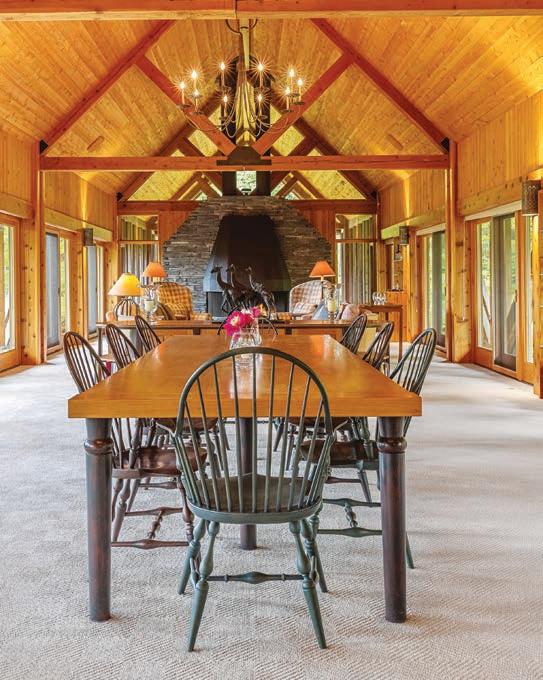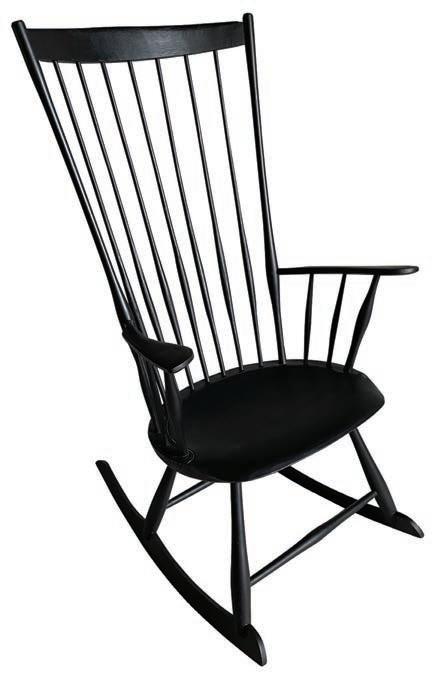
1 minute read
Classic Craftsmanship
George Sawyer’s Windsor chairs are both innovative and timeless.
BY ROBERT KIENER
Walking into chair maker
George Sawyer’s Vermont workshop, a restored barn built in the 1870s, is like stepping back in time. Piles of curled wood shavings cover the floor, an apprentice uses a handmade adze to rough out a chair seat from a two-inch-thick plank of butternut wood, and Sawyer himself painstakingly fits a hand-carved white-oak spindle into a graceful Windsor balloon-back side chair.
CLOCKWISE FROM TOP: Sawyer
Made’s Shaker Bench in red oak and natural oil. The Art at the Kent museum in Calais, Vermont, featured craftsman George Sawyer’s art installation, The Wayward Bench. Sawyer Made’s Rodback Rocking Chair in maple, ash, pine, milk paint, and natural oil.
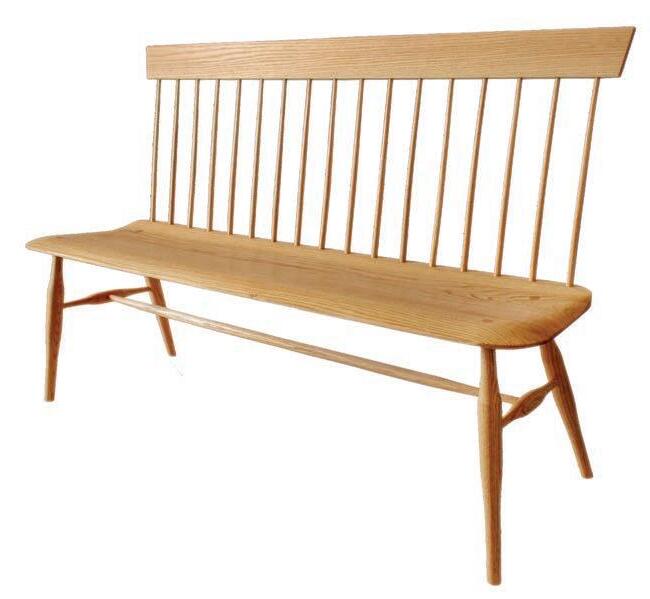
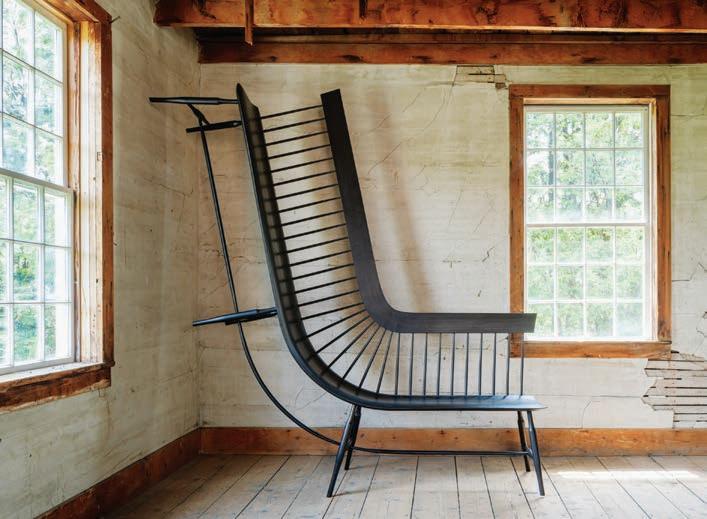
Like his father before him, Sawyer has devoted his life to crafting these chairs. “The Windsor chair is a wonderful combination of elegance and delicacy and strength,” says the forty-year-old furniture maker as he takes a break from working. “And I love the challenge of making the numerous traditional Windsor designs as well as producing my own custom pieces.”
Sawyer, a Rhode Island School of Design graduate, works almost completely by hand, from splitting locally sourced green woods (the moisture makes them more pliant) to carving, drilling, steaming, shaping, and fitting everything together. The pieces are then finished with two to three coats of milk paint, buffed, and treated with oil.
“While there are a set of rules and techniques for making Windsors,” Sawyer explains, “within that traditional framework there is also the opportunity for an infinite amount of variability. That’s what makes every piece such a challenge—and fun.”
Traditional designs that range from the comb-back armchair to the continuous armchair to the Windsor settee comprise roughly three-quarters of Sawyer’s production. A typical chair takes about a week to complete. He often works with architects, builders, interior designers, and homeowners on commissions.


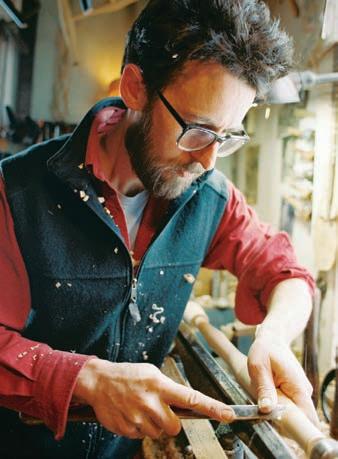
But whatever the project, Sawyer uses the same time-tested crafted-by-hand techniques that have made his chairs so popular. “We never compromise on quality,” he says. “I want my chairs to be comfortable and last 200 years. It’s a nice thought that they will be passed down from generation to generation.”
